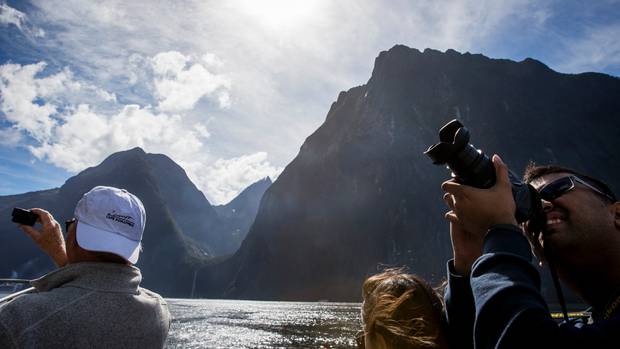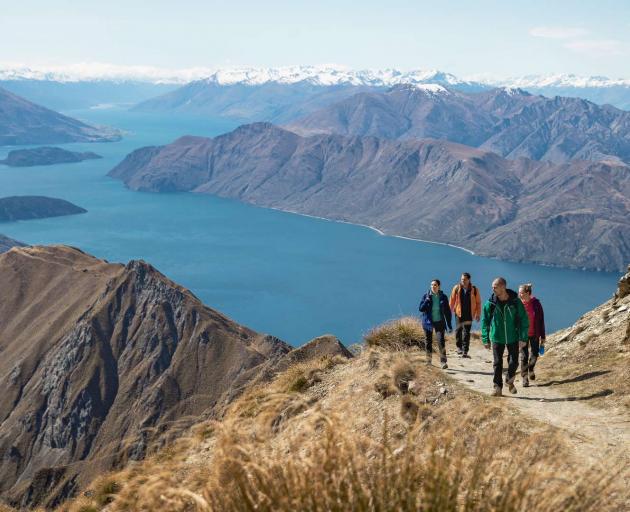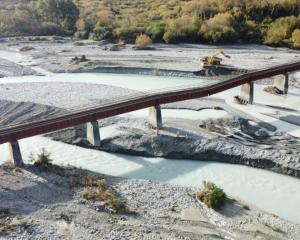
Half of all international tourists who came to New Zealand in the past year visited one of our national parks - and in some places numbers have swelled by a third.
The Department of Conservation has welcomed the influx, while noting the growing challenges that rising tourism numbers pose for New Zealand's world-revered backyard.
New figures showed 1.75 million international tourists, or 52% of all visitors here, travelled to a national park in the year ending March - an increase of 5%.
At Franz Josef Glacier on the West Coast, numbers over the period grew 9% to 750,000, with the glacier valley receiving about 6000 visitors a day during peak season and at times a 30-minute wait for car parks.
Milford Sound continued its trend of about 9% growth annually over the past five years, with more than 4500 visitors on its busiest days and 810,000 visitors for the 12-month period.
Roys Peak, near Wanaka, had a 27% increase, with more than 75,000 people visiting, resulting in queues for photos at the now famous rock overlooking Lake Wanaka.

Visitors to the Hooker Track increased by 35% and numbers to Aoraki/Mount Cook National Park are estimated to be about 945,000 in the year ending March 2018, showing a 17.5% growth from 2016/17.
The high number of international tourists comes on top of the estimated 3.9 million New Zealanders who also visit public conservation land and water at least once a year.
"DoC welcomes increasing numbers of people visiting New Zealand's great outdoors provided we can protect the special nature they come to experience," DoC director-general Lou Sanson said.
International visitor numbers were predicted to increase by a further million over the next six years, he said.
"This growth in domestic and overseas visitors comes with challenges of capacity, protection of natural and cultural values, and quality of experience in some high-use sites," Sanson said.
"DoC is committed to ensuring our natural and historic heritage isn't put at risk by increasing use."
Compared to previous years, DoC planned for more than 50,000 extra staff hours over the summer season.

Tourism remains New Zealand's largest export earner, now pulling in $36 billion in expenditure annually, $14.5 billion of that coming from international visitors.
But Forest and Bird chief executive Kevin Hague argued the growth had outpaced New Zealand's ability to protect the special nature of those places that most attracted tourists.
"Pretty well every site that is popular with tourists has become degraded in some way - even if that degradation is adding a car park or a wider track."


Hague wanted to see the tourism industry shift to the point where fewer tourists were visiting our wilderness, but were staying for longer, and spending more.
"Except for in some isolated pockets, we have failed to do that."
He also backed an international visitor levy that would channel money back into New Zealand's biodiversity.
Although the proposition hadn't yet been put to Cabinet members, Conservation Minister Eugenie Sage last week said an announcement on that issue was expected soon.
Conservation allocations in last week's Budget included $5.5 million to improve tourism management, which Sage said involved "being more strategic" around tourism, and "how [tourists] can be moved around better, rather than putting in ever-expanding carparks and the like".
DoC itself received a $181.6 million boost for the next four years, which also included an extra $81.3 million in operating funds for predator control and $16.2 million to strengthen its core capability and capacity.
- By Jamie Morton












